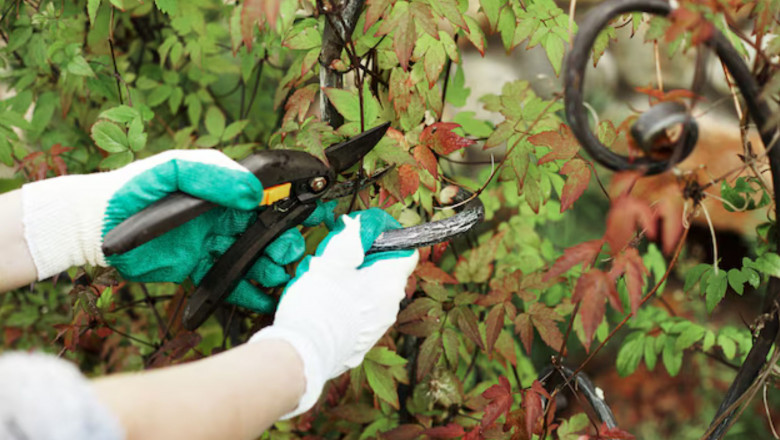views
Fruit tree pruning is the process of cutting back certain parts of a tree, like branches or buds, to improve its growth and fruit production. It's not just about trimming away excess growth. Pruning helps the tree stay healthy, produce better fruit, and grow in the right shape. Here’s why fruit tree pruning services matter and how it benefits your trees.
What Is Fruit Tree Pruning?
Pruning involves trimming back branches, removing dead or unhealthy growth, and shaping the tree. For fruit trees, it’s a way to ensure they grow strong, healthy, and produce high-quality fruit. It’s an ongoing task that should be done regularly, not just once.
Why Does Pruning Matter?
-
Healthier Growth
Pruning helps remove dead or damaged branches. This allows the tree to focus its energy on healthy new growth. -
Better Airflow and Sunlight
When branches are too crowded, airflow and sunlight can’t reach the inner parts of the tree. Pruning opens up the tree and lets more sunlight in. This helps reduce diseases and promotes better fruit. -
More Fruit
By removing some branches, the tree can focus on producing fewer but higher-quality fruits. Instead of a lot of small, weak fruit, you get fewer but bigger and better fruit. -
Control Overgrowth
Without pruning, fruit trees can grow out of control. Overgrowth can lead to broken branches, especially when the fruit gets heavy or during strong winds. Pruning helps keep the tree at a manageable size. -
Easier Harvesting
A pruned tree is easier to pick from. You can reach the fruit more easily and won’t miss as much.
When Should You Prune?
The best time to prune fruit trees is in late winter or early spring before new growth starts. Pruning at this time gives the tree a head start and allows it to heal quickly. In some cases, light pruning in summer can also be helpful for shaping and removing excess growth.
How to Prune Your Fruit Trees
-
Look at the Tree
Start by inspecting the tree. Remove any dead, broken, or diseased branches. Look for branches that cross over each other or are growing in the wrong direction. -
Use Sharp Tools
Sharp tools are key for making clean cuts. Use pruning shears for small branches and a saw for larger ones. Clean cuts help the tree heal faster and reduce the risk of infection. -
Make the Right Cuts
Start by removing dead wood. Then, cut branches that are crowded or rubbing against each other. Finally, trim the tree for a nice, even shape. -
Don’t Overdo It
Only remove about 20-30% of the tree’s branches at once. Over-pruning can harm the tree and stress it out.
Why Professional Pruning is a Good Idea
Pruning might seem easy, but it’s important to know what you’re doing. Professionals have the knowledge and experience to prune your trees correctly. They can spot problems before they become big issues and make sure your tree stays healthy and strong.
Final Takeaway
Fruit tree pruning is essential for healthy trees and better fruit. It promotes healthy growth, improves fruit quality, and helps keep the tree in good shape. Regular pruning can also help prevent pests and diseases.
For expert care, consider reaching out to Bilzerian Tree and Land Services. They know how to take care of your fruit trees and keep them thriving.
Along with pruning, spring and fall clean-up is important to keep your yard in top shape. A well-maintained yard ensures your fruit trees and plants get the care they need to thrive year-round.






















Comments
0 comment